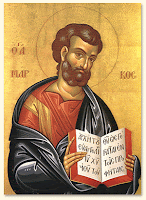Saint Adrian III (d. 885) Pope Hadrian III
Also known as: Hadrian III
Little is known of the life or papacy of Adrian III, or why he is venerated as a saint. He was born in Rome
During his reign, there was a great famine in Rome
Cultus confirmed: 1892 by Pope Leo XIII
Feast: July 8 (formerly September 7)

















